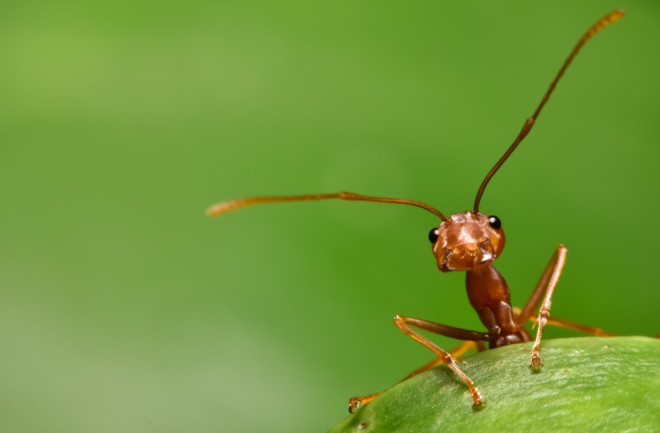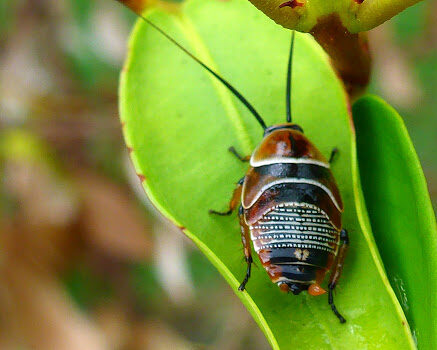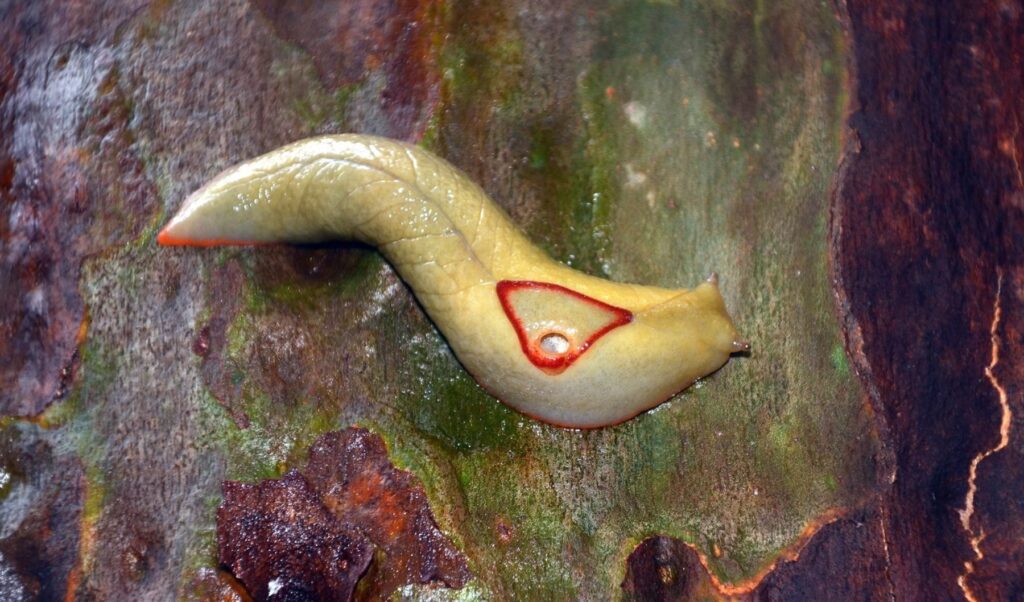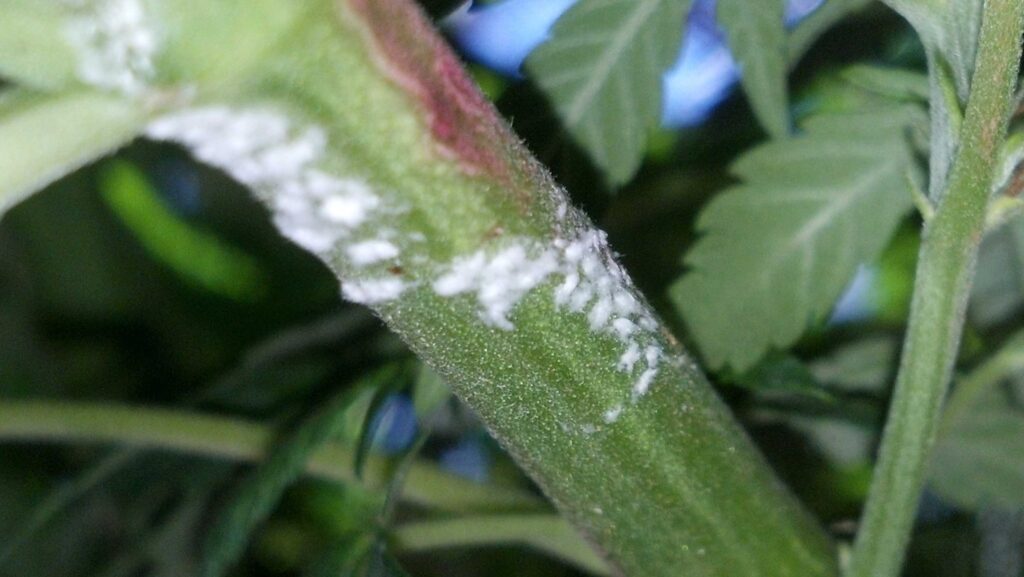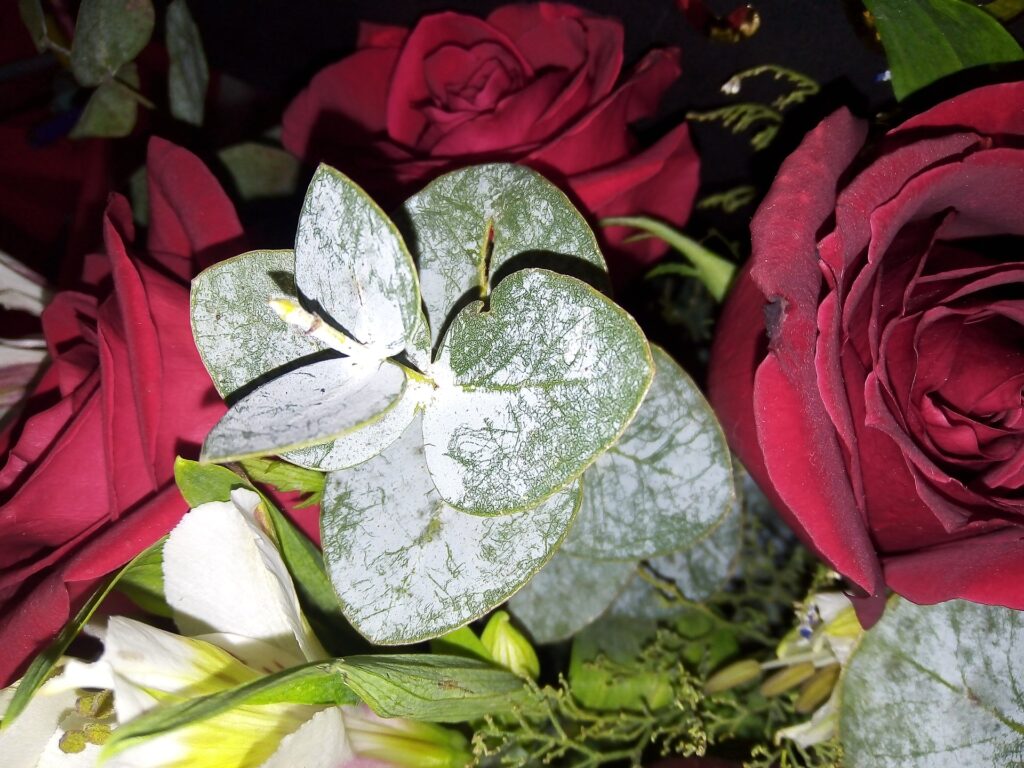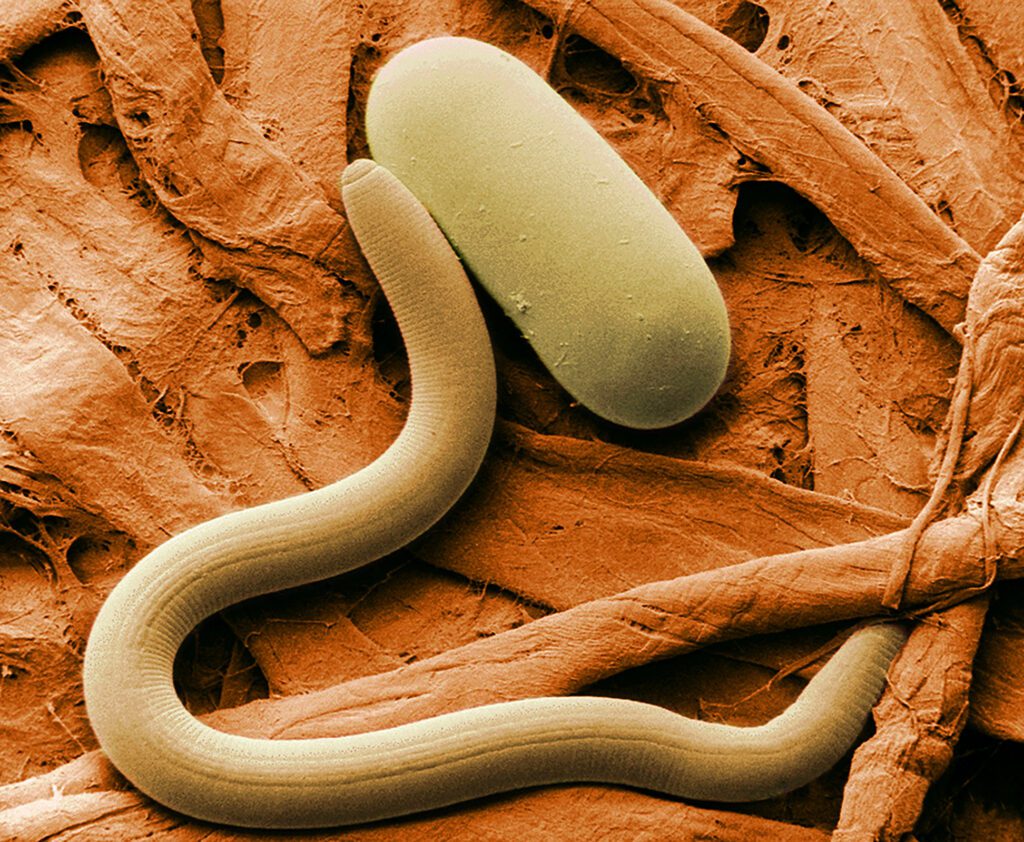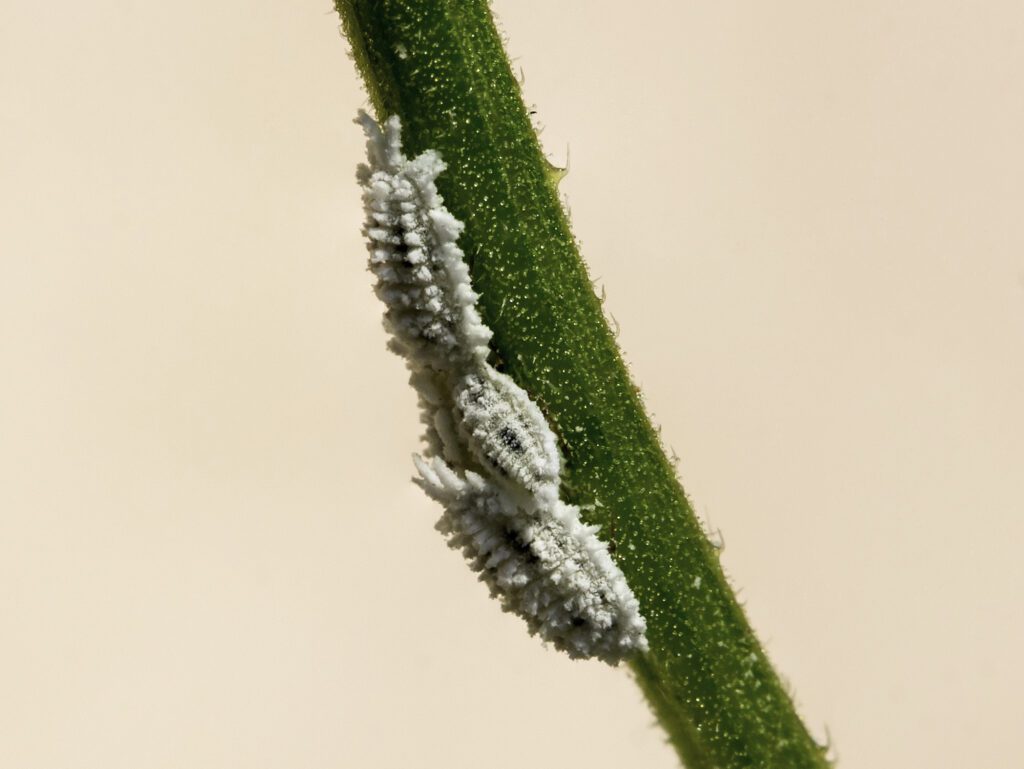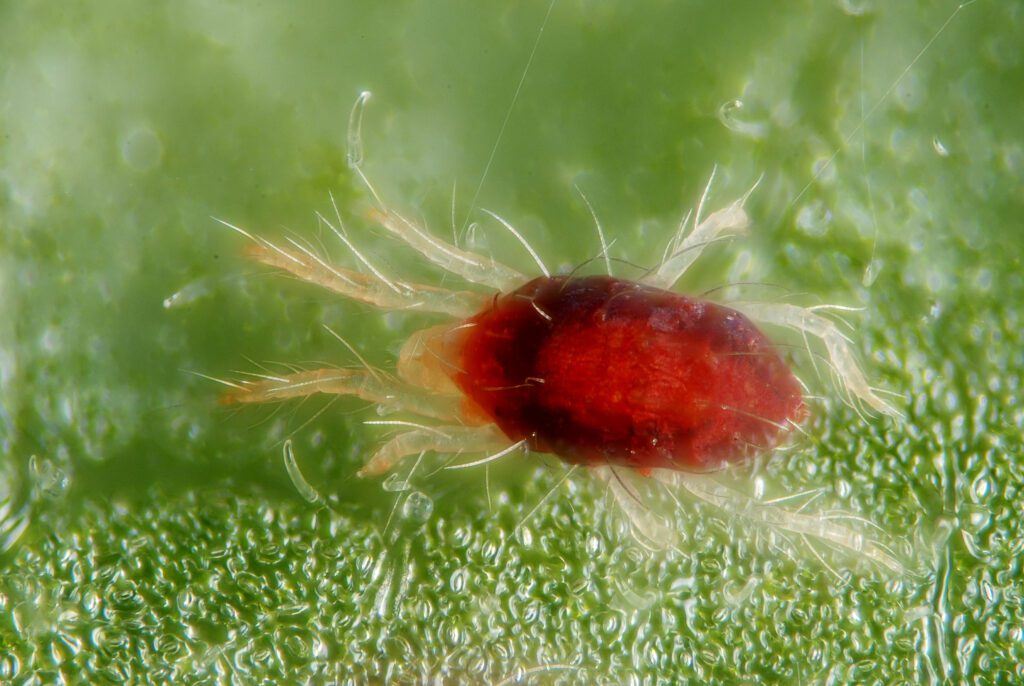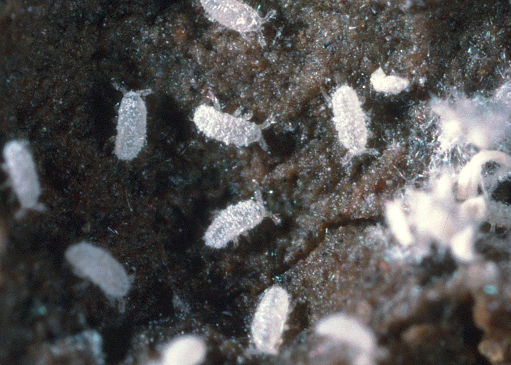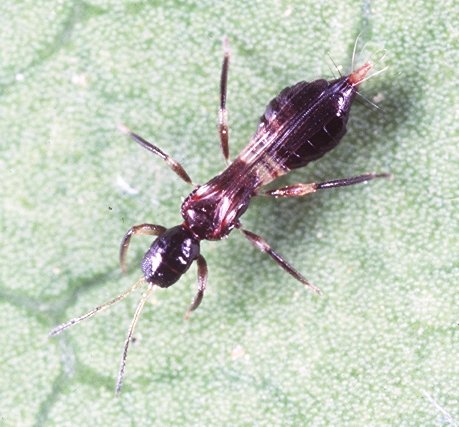Researched by Dirar Flazi
Part one (Pests)
Pests can be very challenging. Here, you are taking care and growing a beautiful garden, and suddenly it’s turned into a feast by those little creatures that you can’t seem to be able to kill. It’s frustrating, especially when it starts spreading in the garden or the field while you are kissing your crops goodbye.
Diagnosis is a major step that is mostly underestimated by people when facing a new challenge. We rush into implementing fixes without investing enough time to diagnose the problem and understand all the options that exist out there. I know I do.
Identifying the issue before treatment is a very important thing. We should be certain of what we are treating before taking any action. That’s why we visit the doctor before the pharmacists, and not vice versa.
Identify, Plant Pests Disease and disorders
Pest groups:
- Insects: Ants, Cockroaches, Caterpillars, Aphid’s, Whitefly for example
- Gastropods: Snails and Slugs
- Plants: Weeds and Invasive plant species.
- Disease: Blight, White Mould, Powdery Mildew.
Insects are a class of invertebrate animals that belong to the phylum Arthropoda. They make up the largest group of animals on Earth, with over one million known species identified and potentially millions more yet to be discovered. Insects have been incredibly successful in adapting to various environments, and they can be found on every continent, including Antarctica.
Key characteristics of insects include:
- Body Structure: Insects have a segmented body divided into three distinct parts: head, thorax, and abdomen.
- Exoskeleton: They have an exoskeleton made of a tough, protective outer covering called chitin. This exoskeleton provides support and protection for the insect’s body.
- Six Legs: Insects typically have six jointed legs attached to the thorax. These legs enable them to walk, jump, climb, and perform other movements.
- Antennae: Most insects have a pair of antennae on their head, which serve as sensory organs for detecting chemicals, touch, and environmental cues.
- Wings: Many insects have wings that allow them to fly, although not all insects can fly.
- Metamorphosis: Insects undergo metamorphosis, which means they go through different life stages (egg, larva, pupa, and adult) during their life cycle.
- Breathing: Insects breathe through tiny openings called spiracles located along the sides of their bodies. Air enters the body through these spiracles and travels through a system of tubes called tracheae.
Insects play essential roles in various ecosystems. They pollinate plants, recycle organic matter, serve as food for other animals, and can act as both predators and prey. However, some insects can also be considered pests, causing damage to crops, transmitting diseases, and being a nuisance to humans and animals.
Because of their ecological significance and their impact on human activities, the study of insects is a critical branch of science known as entomology. Entomologists study insect behavior, biology, ecology, and the interactions between insects and their environments.
Ants can have both positive and negative effects on plants, but they are generally not considered “bad” for plants in the same way that certain pests like aphids or caterpillars are. However, there are a few reasons why ants can be detrimental to plants under certain circumstances:
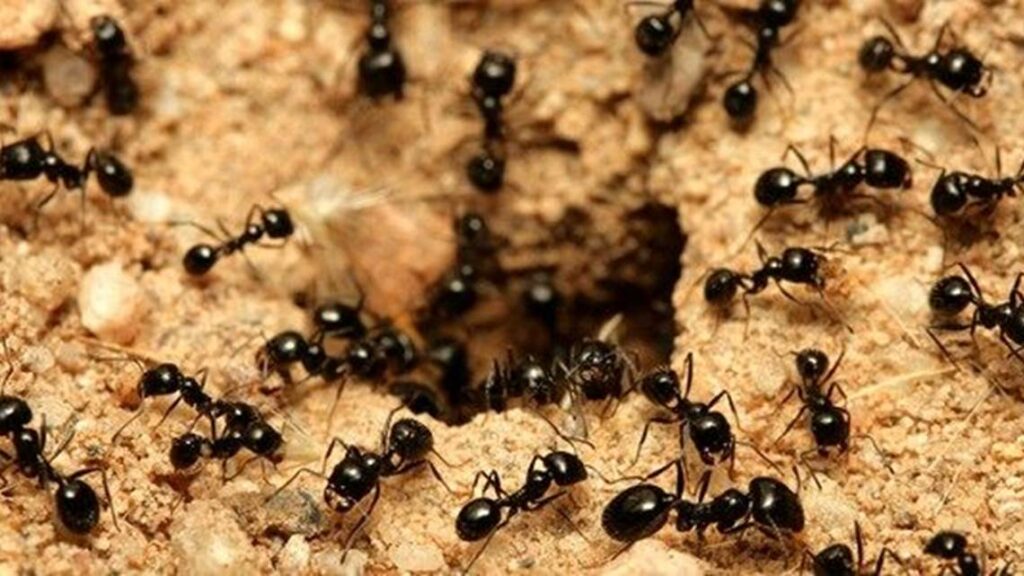
- Aphid Farming: Some ant species have a mutualistic relationship with aphids, where they “farm” aphids for their honeydew, a sugary substance that aphids produce after feeding on plant sap. Ants protect the aphids from predators and, in return, collect the honeydew as a food source. This can be harmful to plants because aphids can damage plant tissues while feeding on sap, and their presence attracts ants, which may further protect and encourage aphid populations.
- Soil Disturbance: Some ant species are known for digging and tunneling in the soil. While this can have positive effects on soil aeration and nutrient cycling, excessive ant activity around plant roots can lead to soil disturbance and root damage, especially in the case of seedlings or young plants.
- Seed Dispersal: Certain ant species are seed dispersers, which can be both beneficial and detrimental to plants. While seed dispersal can help plants spread and colonize new areas, it can also lead to the spread of invasive plant species in some cases.
- Protective Insects: In some instances, ants may protect herbivorous insects from natural predators or parasitoids. This can indirectly increase herbivory and damage to plants.
It’s essential to note that not all ants have negative effects on plants, and many ant species play important roles in ecosystems, such as seed dispersal, soil aeration, and predation of other pests. Moreover, ants often have complex interactions with plants, and their impact can vary depending on the specific ant species, the plant species involved, and the environmental context.
In summary, while ants may have some negative effects on plants under certain circumstances, they are generally not considered major plant pests. Understanding the specific interactions between ants and plants can help in better managing any potential negative impacts. In many cases, ants contribute positively to ecosystem health and functioning.
Cockroaches are primarily considered indoor pests and are not typically known for directly damaging plants outdoors. However, there are a few ways in which cockroaches can indirectly affect plants in indoor settings:
- Contamination: Cockroaches are scavengers and can carry various pathogens and bacteria on their bodies. When they crawl over indoor plants, they may leave behind these contaminants, which could potentially affect the plant’s health.
- Organic Debris: Cockroaches are attracted to decaying organic matter, and they may seek shelter in potted plants or planters where organic debris accumulates. Their presence can contribute to the breakdown of organic material, which may affect the soil’s nutrient balance and overall plant health.
- Disruption of Soil: If cockroaches infest indoor plant pots, they may burrow into the soil, disturb plant roots, and create tunnels. This soil disturbance can be harmful to the root system and affect the plant’s stability and growth.
- Damage to Seedlings: In some cases, cockroaches may feed on young, tender plant seedlings or gnaw on plant parts if they have limited food sources.
It’s important to note that cockroaches are primarily considered a nuisance pest in homes and indoor environments rather than a significant threat to outdoor plants. If you notice cockroach activity near indoor plants, it may be a sign of an infestation that needs to be addressed to prevent any potential indirect impact on plant health. Keeping indoor spaces clean, reducing food debris, and implementing pest control measures can help mitigate cockroach-related issues indoors and protect your plants.
Caterpillars are the larval stage of butterflies and moths, and while they are a crucial part of the ecosystem, some caterpillars can be considered plant pests because of their feeding habits. Here are some reasons why caterpillars can be detrimental to plants:

- Feeding on Leaves: Many caterpillar species are herbivorous and feed on plant leaves. They have specialized mouthparts that allow them to chew and consume plant tissues. As they feed, caterpillars can cause significant damage to the foliage, leading to reduced photosynthesis and stunted plant growth.
- Defoliation: In severe cases, large populations of caterpillars can cause defoliation, which means they consume most or all of the leaves on a plant. Defoliation weakens the plant, making it more vulnerable to diseases and other pests.
- Impact on Yield: Caterpillar damage to crops can lead to reduced yields and economic losses for farmers. For example, caterpillars that attack fruit crops can cause direct damage to the fruits, making them unmarketable or reducing their quality.
- Stress on Plants: The presence of caterpillars and their feeding activities can stress plants, making them more susceptible to other pests, diseases, and environmental stresses.
- Species-Specific Preferences: Some caterpillar species have specific preferences for certain plant species. If their preferred plants are prevalent in an area, a caterpillar infestation can have a severe impact on those plant populations.
- Seedling Damage: Young and tender plant seedlings are especially vulnerable to caterpillar feeding, and severe damage at this stage can lead to the death of the plant.
- Impact on Biodiversity: In some cases, certain caterpillar species may be introduced to new regions where they lack natural predators or controls. Without these controls, they can become invasive and have a negative impact on native plant species, disrupting the local ecosystem.
It’s important to note that not all caterpillars are plant pests, and many species play essential roles in pollination and as a food source for other animals. Some caterpillars are even considered beneficial because they feed on other pests or contribute to nutrient cycling in ecosystems. In managing caterpillar populations, it’s essential to strike a balance between preserving biodiversity and protecting valuable crops and plants from excessive damage. Integrated pest management (IPM) practices, which include a combination of cultural, biological, and, if necessary, chemical control measures, can help effectively manage caterpillar populations while minimizing negative environmental impacts.
Aphids are small, soft-bodied insects belonging to the superfamily Aphidoidea. They are one of the most common and widespread groups of plant pests, and they can be found on a wide range of plants, including garden plants, agricultural crops, and ornamental plants. Aphids are known for their rapid reproduction and ability to cause damage to plants through their feeding behavior.
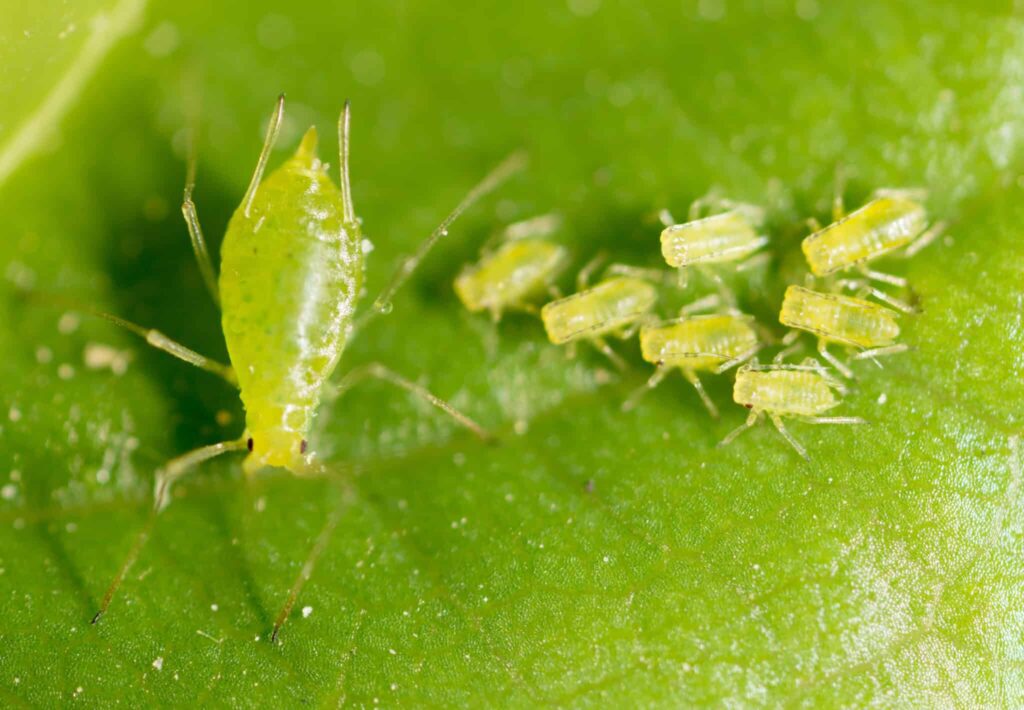
Here are some key characteristics and facts about aphids:
- Physical Appearance: Aphids are usually small, ranging from 1 to 10 millimeters in length. They have pear-shaped bodies with long, slender antennae and two cornicles, or “tailpipes,” on their backs.
- Feeding Behavior: Aphids are sap-sucking insects. They use their specialized mouthparts, called stylets, to pierce plant tissues and feed on the sap. While feeding, they excrete excess sugars and water as a sticky, sweet substance known as honeydew.
- Reproduction: Aphids have a unique reproductive ability called parthenogenesis. This means that females can reproduce asexually without mating, giving birth to live nymphs without the need for fertilization. This rapid reproduction allows aphid populations to grow quickly under favorable conditions.
- Color Variation: Aphids come in various colors, including green, black, brown, yellow, and pink. Some species may have wings, while others are wingless.
- Host Plants: Aphids can infest a wide range of plants, and many species have specific preferences for particular plant families or species.
- Damage to Plants: Aphids can cause damage to plants by removing sap, which can lead to stunted growth, wilting, yellowing of leaves, and even death in severe infestations. Moreover, their feeding weakens plants and makes them more susceptible to diseases.
- Honeydew and Sooty Mold: The honeydew excreted by aphids can attract other pests, such as ants, and can also promote the growth of sooty mold on leaves. Sooty mold is a black fungus that grows on the honeydew, reducing the plant’s ability to photosynthesize.
- Natural Predators: Aphids have many natural enemies, including ladybugs, lacewings, parasitic wasps, and certain birds. These natural predators help keep aphid populations in check.
Controlling aphid populations often involves a combination of cultural practices, such as maintaining plant health and cleanliness, introducing natural predators, and, if necessary, using insecticidal soaps or horticultural oils. Integrated pest management (IPM) is an environmentally friendly approach that focuses on managing pest populations while minimizing the use of chemical pesticides.
Whiteflies are small, winged insects that belong to the family Aleyrodidae. They are closely related to aphids and scale insects and are known for their rapid reproduction and ability to infest a wide range of plants. These tiny, sap-sucking insects are common plant pests that can cause significant damage to both indoor and outdoor plants.

Here are some key characteristics and facts about whiteflies:
- Physical Appearance: Whiteflies are tiny insects, usually measuring between 1.5 to 3 millimeters in length. They have a powdery white appearance, which gives them their common name. When disturbed, adult whiteflies will often fly away in a cloud, resembling tiny white moths.
- Feeding Behavior: Whiteflies use their specialized mouthparts, called stylets, to feed on plant sap. Like aphids, they excrete honeydew, a sticky, sugary substance that can attract ants and promote the growth of sooty mold on plant surfaces.
- Host Plants: Whiteflies infest a wide range of plants, including vegetables, ornamental plants, fruits, and many other garden plants. They are commonly found on the undersides of leaves.
- Damage to Plants: Whiteflies can cause damage to plants by feeding on sap, leading to yellowing of leaves, stunted growth, and wilting. Severe infestations can weaken plants and reduce their ability to photosynthesize.
- Rapid Reproduction: Whiteflies reproduce quickly, with females laying hundreds of eggs on the undersides of leaves. These eggs hatch into tiny nymphs, which develop through several stages before becoming adults.
- Transmission of Plant Viruses: Whiteflies can also transmit plant viruses from infected plants to healthy ones, making them vectors of various viral diseases that can devastate crops.
- Natural Predators: Whiteflies have natural enemies, such as ladybugs, lacewings, parasitic wasps, and some insect-eating birds. These predators can help keep whitefly populations in check.
Controlling whitefly populations often involves similar approaches to aphid management, such as practicing good plant hygiene, introducing natural predators, and using insecticidal soaps or horticultural oils if necessary. Additionally, physical barriers like row covers can help protect plants from whitefly infestations in agricultural settings. Integrated pest management (IPM) is vital for effective and sustainable whitefly control, as it focuses on a combination of strategies that minimize environmental impact while effectively managing the pest populations.
Snails are gastropod mollusks with a coiled shell that serves as their protective covering. They are soft-bodied animals that move slowly and are well-adapted to a wide range of environments, including terrestrial, freshwater, and marine habitats. While some snails are beneficial to the ecosystem, others can be considered pests, particularly in gardens and agricultural settings.
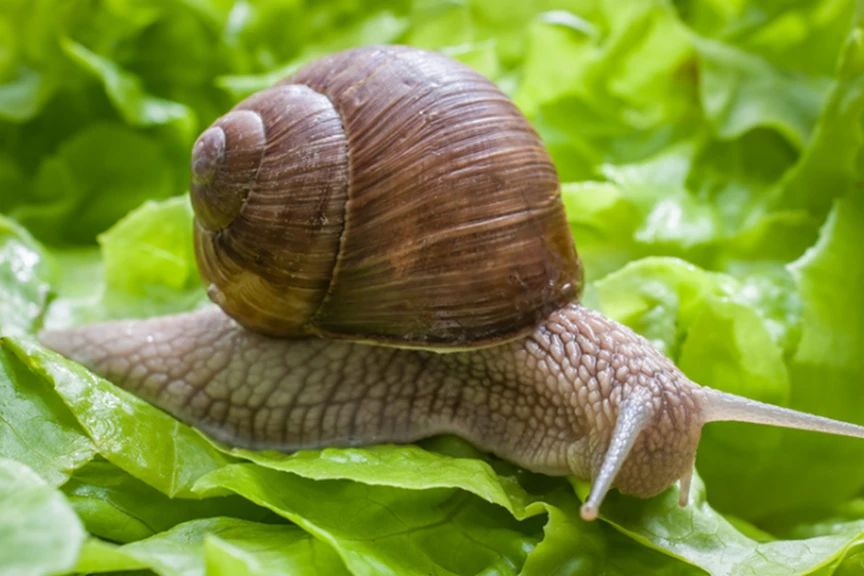
Here are some key characteristics and facts about snails:
- Shell: The most distinctive feature of snails is their spiral-shaped shell. The shell provides protection from predators and environmental hazards.
- Movement: Snails move by contracting and expanding their muscular foot, leaving behind a trail of slime. This slime helps reduce friction and allows them to glide along surfaces.
- Feeding Behavior: Most snails are herbivores and feed on plant materials like leaves, flowers, and fruits. However, some snails are omnivorous or carnivorous, consuming algae, decaying organic matter, or even small insects.
- Reproduction: Snails are hermaphrodites, which means each individual has both male and female reproductive organs. However, they still require mating with another snail to fertilize their eggs. After mating, they lay eggs in a protected location, and the eggs hatch into tiny snails.
- Pest Status: While some snail species are beneficial by consuming decaying plant matter and algae, certain species can be destructive to gardens and crops. They can cause damage to plant foliage and fruit, leading to economic losses for farmers and gardeners.
- Control: Managing snail populations can be challenging. Some common methods for controlling snails in gardens and agriculture include handpicking, creating physical barriers like copper tape or diatomaceous earth, and using molluscicides (snail baits).
- Ecological Role: In natural ecosystems, snails play important roles in nutrient cycling and as a food source for various animals, including birds, mammals, and other invertebrates.
It’s essential to identify the specific snail species and assess their impact on the ecosystem before implementing control measures. In some cases, non-chemical approaches like handpicking and encouraging natural predators can be effective and environmentally friendly ways to manage snail populations. Integrated pest management (IPM) strategies that combine various control methods can help strike a balance between preserving biodiversity and protecting valuable plants from snail damage.
Slugs are gastropod mollusks similar to snails, but they lack the spiral-shaped shell. Instead, they have a soft, slimy body that makes them well-adapted to a wide range of habitats, including gardens, agricultural fields, and natural environments. Like snails, some slug species can be beneficial in certain ecosystems, while others can be considered pests, especially in gardens and crops.
Here are some key characteristics and facts about slugs and their impact as pests:
- Physical Appearance: Slugs have soft, elongated bodies with a distinct head and a pair of retractable antennae. They move by contracting and expanding their muscular foot, leaving behind a trail of slime, which helps them glide along surfaces.
- Feeding Behavior: Slugs are herbivorous and primarily feed on plant material, including leaves, flowers, fruits, and seedlings. Their feeding habits can cause damage to crops, ornamental plants, and garden vegetation.
- Preferred Habitats: Slugs thrive in moist environments and are most active during cool, damp weather. They are often found in areas with high humidity, such as gardens, under plant debris, and in damp soil.
- Nocturnal Behavior: Slugs are nocturnal, which means they are more active at night and hide during the day to avoid drying out in the sun.
- Damage to Plants: Slugs can cause extensive damage to plants by feeding on various plant parts, leading to holes in leaves, chewed flowers, and fruit damage. They can also consume young seedlings, preventing new plants from establishing.
- Economic Impact: In agriculture and horticulture, slug damage can lead to economic losses due to reduced crop yields and the need for additional resources to control their populations.
- Attraction to Moisture: Slugs are attracted to moist and organic-rich environments, making gardens and farms particularly susceptible to infestations, especially during wet and rainy periods.
- Environmental Impact: Excessive slug populations can disturb the balance of native plant populations in natural environments and impact the growth of specific plant species.
- Control Measures: Managing slug pests often involves a combination of strategies, including handpicking, barriers, natural predators (e.g., birds, frogs), and the use of slug baits or other control products.
It’s important to note that not all slug species are pests, and some are essential components of ecosystems, contributing to nutrient cycling and serving as a food source for various animals. When controlling slug populations, it’s crucial to consider the environmental impact and employ integrated pest management (IPM) practices that minimize harm to non-target species while effectively managing slug populations in garden and agricultural settings.
Blight is a general term used to describe various plant diseases caused by different pathogens, including fungi, bacteria, and viruses. Blight diseases typically manifest as rapid and severe browning, withering, or death of plant tissues, often leading to significant damage or even complete destruction of affected plants. Blights can affect a wide range of plants, including crops, garden plants, and trees.
Here are some common types of blight and the pathogens responsible for them:
- Fungal Blights: Fungal blights are caused by various fungi and are among the most common types of blight diseases. Examples include:
- Late Blight (Phytophthora infestans): A devastating disease affecting potatoes and tomatoes, known for causing widespread crop losses, especially during cool, moist weather.
- Early Blight (Alternaria solani): A fungal disease affecting tomatoes and potatoes, characterized by dark spots on leaves and stems.
- Fire Blight (Erwinia amylovora): A bacterial disease affecting apples, pears, and other members of the Rosaceae family, causing wilting and darkening of branches, resembling scorched appearance.
- Bacterial Blights: These blights are caused by bacterial pathogens and can affect various plant species:
- Bacterial Leaf Blight (Xanthomonas spp.): A disease affecting many plants, including rice, soybeans, and peppers, causing water-soaked lesions on leaves.
- Citrus Canker (Xanthomonas citri subsp. citri): A bacterial disease affecting citrus trees, causing raised lesions on leaves, stems, and fruits.
- Viral Blights: Viral blights are caused by plant viruses and can affect numerous crops and ornamental plants:
- Tomato Spotted Wilt Virus (TSWV): A virus affecting tomatoes, peppers, and various other plants, leading to wilting, necrosis, and stunted growth.
- Cucumber Mosaic Virus (CMV): A widespread virus affecting cucumbers, tomatoes, and other plants, causing mosaic patterns and leaf distortion.
Control and management of blight diseases depend on the specific pathogen involved. Integrated pest management (IPM) practices, including planting disease-resistant varieties, crop rotation, proper sanitation, and judicious use of fungicides or bactericides when necessary, can help reduce the impact of blight diseases. Timely detection and removal of infected plant materials can also help prevent the spread of blights to healthy plants. Additionally, implementing good cultural practices, such as proper watering and balanced nutrition, can promote plant health and resilience to blight pathogens.
White mold, also known as Sclerotinia sclerotiorum, is a fungal disease that affects a wide range of plants, including crops and ornamental plants. It is a significant plant pathogen that can cause severe damage and economic losses in agricultural settings. White mold gets its name from the fluffy, white, cotton-like mycelium that forms on infected plant tissues.
Key characteristics and facts about white mold:
- Host Plants: White mold can infect various plant species, including beans, peas, lettuce, sunflowers, canola, soybeans, tomatoes, and many others. It is particularly common in cool and humid conditions.
- Infection and Spread: The white mold fungus infects plants through spores that are released from infected plant debris or sclerotia (hardened structures produced by the fungus). The spores can be spread by wind, water, and movement of contaminated soil or plant materials.
- Symptoms: The first signs of white mold infection are water-soaked lesions on the plant’s stem, leaves, or flowers. As the disease progresses, the lesions become fluffy white and moldy, with small black sclerotia forming within the affected tissues.
- Impact on Plants: White mold can cause wilting, yellowing, and death of plant tissues, leading to reduced plant vigor, yield losses, and in severe cases, complete plant death.
- Survival and Persistence: The white mold fungus can survive in the soil for several years through its sclerotia. These sclerotia can germinate and infect new plants when environmental conditions become favorable.
- Management: Managing white mold requires a combination of preventive and control measures. Crop rotation, tillage, and removing plant debris after harvest can reduce the pathogen’s survival in the soil. Planting disease-resistant varieties can also help minimize the impact of white mold. In cases of severe infection, fungicides can be used as part of an integrated pest management (IPM) approach to control the disease.
- Environmental Factors: White mold tends to be more severe in areas with cool, wet conditions. High humidity and prolonged leaf wetness provide favorable conditions for the fungus to infect plants.
- Biological Control: Some beneficial microorganisms, like Trichoderma spp., have shown potential in suppressing white mold by competing with the pathogen for resources.
Early detection and timely implementation of control measures are crucial in managing white mold effectively. As with any plant disease, preventing its occurrence is often more effective and economical than trying to control an established outbreak. Integrated pest management (IPM) practices that combine cultural, biological, and chemical methods can help minimize the impact of white mold and protect crops from significant losses.
Powdery mildew is a common fungal disease that affects a wide range of plants, including garden plants, ornamentals, and agricultural crops. It is caused by different species of fungi from the Erysiphales order. Powdery mildew is characterized by the appearance of a white or grayish, powdery, and talcum-like growth on the surface of leaves, stems, flowers, and fruits of infected plants.
Key characteristics and facts about powdery mildew:
- Host Plants: Powdery mildew can infect numerous plant species, including roses, cucumbers, squash, tomatoes, grapes, apples, and many others. Different species of powdery mildew fungi have specific host plant preferences.
- Fungal Structure: Powdery mildew fungi form a superficial layer of mycelium on the surface of plant tissues. Unlike some other fungal diseases, they do not require water to germinate or infect plants, making them particularly well-adapted to dry conditions.
- Symptoms: The most noticeable symptom of powdery mildew is the powdery white or grayish growth on the plant’s surface. Infected plant tissues may also exhibit curling, distortion, and premature yellowing of leaves. In severe cases, the disease can weaken the plant and reduce its growth and productivity.
- Conditions Favoring Development: Powdery mildew thrives in moderate temperatures (usually between 60-80°F or 15-27°C) and high humidity. The disease often becomes more prevalent during warm days and cool nights, with poor air circulation and humidity levels above 50-70%.
- Spread: Powdery mildew can spread from infected plants to nearby healthy ones through airborne spores, which are carried by wind or other means. The disease can also overwinter on plant debris or buds, becoming a source of infection in the following growing season.
- Control: Managing powdery mildew involves a combination of preventive and control measures. Selecting disease-resistant plant varieties, providing good air circulation, and avoiding excessive watering on foliage can help prevent the disease. Fungicides can be used to control severe outbreaks, but it’s essential to rotate fungicides to prevent resistance development in the fungus.
- Cultural Practices: Pruning and removing infected plant parts, as well as cleaning up fallen plant debris, can reduce the disease’s spread. Avoiding overhead irrigation and promoting adequate spacing between plants can also help improve air circulation and reduce humidity, creating less favorable conditions for the fungus.
- Biological Control: Some biological control agents, such as sulfur and neem oil, can help manage powdery mildew. Beneficial insects, like ladybugs, can also feed on powdery mildew fungi.
Early detection and prompt action are crucial in managing powdery mildew effectively. Preventive measures and integrated pest management (IPM) practices can help control the disease and minimize its impact on plants.
Australia is home to a diverse range of insect pests that can affect various crops, garden plants, and natural ecosystems. Some of the common insect pests found in Australia include:
- Queensland Fruit Fly (Bactrocera tryoni): A significant pest of fruit crops, especially in eastern Australia. The adult flies lay eggs in ripening fruits, leading to fruit damage and crop losses.
- Helicoverpa species (Helicoverpa armigera and Helicoverpa punctigera): Also known as the corn earworm or bollworm, these caterpillars are polyphagous and feed on a wide range of crops, including corn, cotton, tomatoes, and various fruits.
- Cabbage White Butterfly (Pieris rapae): The larvae of this butterfly feed on cabbage family crops, such as cabbage, broccoli, and cauliflower, causing damage to leaves.
- Aphids (Various species): These sap-sucking insects feed on a wide range of plants, causing stunted growth and transmitting plant viruses.
- Redback Spider (Latrodectus hasseltii): An infamous venomous spider species known for constructing webs in gardens and outdoor areas.
- Grasshoppers and Locusts (Various species): These herbivorous insects can cause significant damage to crops and pasture, especially during population outbreaks.
- Whiteflies (Various species): Similar to aphids, whiteflies are sap-sucking insects that damage plants and transmit plant viruses.
- Bronze Orange Bug (Musgraveia sulciventris): A pest of citrus trees, the nymphs and adults feed on young fruit and leaves, causing damage.
- Two-Spotted Mite (Tetranychus urticae): A common pest of crops and ornamental plants, they suck sap from plant leaves, leading to discoloration and damage.
- Thrips (Various species): Thrips feed on plant tissues, causing silvery streaks or distorted growth on leaves and flowers.
These are just a few examples of insect pests found in Australia. The country’s diverse climate and ecosystems create an environment for a wide range of insect species.
Few more plant’s pest that we will discuss in Details;
Cyclamen mites (Phytonemus pallidus) are tiny arachnids belonging to the family Tarsonemidae. Despite their name, they are not true mites but rather belong to a separate group within the arachnid class. These mites are known for being destructive pests, especially in greenhouses and indoor environments, where they can infest various plant species, including cyclamen, African violets, and other ornamental plants.
Key characteristics and facts about cyclamen mites:
- Size: Cyclamen mites are incredibly small, measuring about 0.2 mm in length, making them barely visible to the naked eye.
- Color: Adult cyclamen mites are pale or transparent, which makes them difficult to see without the aid of a microscope.
- Feeding Behavior: Cyclamen mites are plant sap feeders. They pierce plant tissues and suck the cell contents, causing damage to leaves, stems, buds, and flowers.
- Damage: Infestations of cyclamen mites can lead to a range of symptoms, including distorted, twisted, and stunted growth of plants. Leaves may become deformed, curl, and have a puckered appearance. Flowers can be deformed or fail to open properly.
- Spread: Cyclamen mites can be transported from plant to plant by wind, water splashes, or through physical contact with infested plants.
- Favorable Conditions: Cyclamen mites thrive in warm and dry conditions. Greenhouses and indoor environments provide ideal conditions for their reproduction and spread.
- Lifecycle: Cyclamen mites undergo four stages in their lifecycle: egg, larva, nymph, and adult. The entire lifecycle can be completed in as little as 14 days, allowing for rapid population growth.
Control and management of cyclamen mites can be challenging due to their small size and rapid reproduction. Integrated pest management (IPM) practices are essential for effective control, which may include:
- Regular monitoring: Frequent inspections of plants for early detection of mite infestations.
- Quarantine: Isolating new plants before introducing them to established plant populations to prevent the introduction of mites.
- Pruning and sanitation: Removing heavily infested plant parts and cleaning up fallen debris to reduce mite populations.
- Biological control: Introducing predatory mites (such as Amblyseius cucumeris) that feed on cyclamen mites can help control their populations.
- Chemical control: In severe infestations, chemical insecticides or miticides can be used as a last resort. However, it is crucial to rotate chemicals to prevent mite resistance and to consider the impact on beneficial insects and the environment.
Early intervention and a combination of control measures are crucial for effectively managing cyclamen mites and preventing significant damage to ornamental plants.
Earwigs, also known as dermapterans, are a group of insects belonging to the order Dermaptera. They are characterized by their elongated bodies, distinctive forceps-like cerci (pincers) at the end of their abdomen, and membranous hindwings folded beneath short, leathery forewings. Despite their somewhat intimidating appearance, most earwigs are harmless to humans and are generally considered beneficial insects in the garden.
Key characteristics and facts about earwigs:
- Appearance: Earwigs vary in size, with adult individuals typically measuring between 5 to 25 millimeters in length. They have long, slender bodies with dark brown or black coloration.
- Behavior: Earwigs are primarily nocturnal insects, preferring to be active during the night and hiding in dark, moist places during the day. They are often found in damp areas, such as under mulch, logs, rocks, and decaying vegetation.
- Diet: While some earwig species are omnivores and feed on both plant materials and insects, the majority are scavengers and predators of other small arthropods like aphids, mites, and insect eggs. They are also known to feed on decaying organic matter.
- Pincers: Earwigs have pincers at the end of their abdomen, which they use for defense, mating, and capturing prey. Despite their name, earwigs do not crawl into human ears or cause harm.
- Reproduction: Earwigs undergo simple metamorphosis, meaning they have three life stages: egg, nymph, and adult. Females lay eggs in burrows in the soil or under debris, and they care for their eggs and nymphs until they are ready to fend for themselves.
- Garden Pest Control: Earwigs can be both beneficial and pests in gardens. While they feed on some garden pests, they may also damage certain plants, especially seedlings and soft fruits. Earwigs can be managed by employing proper garden hygiene and using physical barriers, such as traps or rolled-up newspapers, to capture and remove them from the garden.
- Defense Mechanism: When threatened, earwigs can use their pincers to defend themselves. While they may pinch if handled roughly, their pincers are not strong enough to cause significant harm to humans.
Overall, earwigs play an essential role in the ecosystem by contributing to decomposition and acting as predators of other pests. While they may occasionally become garden pests, they are generally not a cause for concern, and their presence in the garden can often be managed through simple and non-toxic methods.
Eelworms, also known as nematodes, are microscopic, worm-like organisms belonging to the phylum Nematoda. They are among the most abundant and diverse groups of animals on Earth and can be found in various habitats, including soil, freshwater, and marine environments. While many nematodes are beneficial, some species can be harmful plant pests.
Key characteristics and facts about eelworms:
- Appearance: Eelworms are extremely tiny, typically measuring between 0.2 to 2 millimeters in length. They have a slender, cylindrical body with a pointed head and a tapered tail, resembling the shape of an eel, hence their common name.
- Plant Parasitism: Some eelworm species are plant parasites and can cause significant damage to crops and garden plants. These parasitic nematodes feed on plant tissues, including roots, stems, and leaves.
- Feeding Behavior: Plant-parasitic eelworms have specialized mouthparts called stylets, which they use to pierce plant cells and feed on the cell contents. This feeding activity can weaken plants, leading to stunted growth, wilting, and reduced yields.
- Host Specificity: Different eelworm species have specific host plant preferences. For example, the potato cyst nematode (Globodera rostochiensis) and the sugar beet nematode (Heterodera schachtii) are known for their specific association with potato and sugar beet plants, respectively.
- Soil-Borne: Plant-parasitic eelworms live in the soil and move through the soil pores, searching for suitable plant hosts to infest. They can disperse within fields through soil movement, water, infected plant material, and human activities.
- Lifecycle: The lifecycle of eelworms includes egg, several juvenile stages (larvae), and adult stages. Depending on the species, the lifecycle can be relatively short or take several weeks or months to complete.
- Control: Managing plant-parasitic eelworms often involves integrated pest management (IPM) strategies. Crop rotation, the use of resistant plant varieties, and proper soil and water management practices can help reduce nematode populations. Nematicides, chemical substances designed to control nematodes, are used in some agricultural settings, but their use requires careful consideration due to potential environmental and non-target effects.
It’s essential to note that not all nematodes are harmful; many are beneficial and play critical roles in nutrient cycling, decomposition, and the control of other pests. Beneficial nematodes, for instance, can be used as biological control agents to manage insect pests in gardens and agricultural fields. Understanding the specific nematode species present and their impact on plant health is crucial for implementing appropriate and sustainable management strategies.
Mealybugs are small, soft-bodied insects belonging to the family Pseudococcidae. They are among the most common and troublesome pests that infest a wide range of plants, including indoor plants, ornamentals, fruits, and vegetables. Mealybugs are known for their waxy, white, powdery appearance, which resembles meal or cotton, giving them their name.
Key characteristics and facts about mealybugs:
- Appearance: Mealybugs have oval-shaped bodies with a white or pale coloration due to the waxy coating that covers their bodies. Some species may have a pink or yellow hue. They are usually about 1 to 5 millimeters in size.
- Feeding Behavior: Mealybugs are sap-sucking insects. They use their piercing-sucking mouthparts to feed on plant juices. As they feed, they excrete a sugary substance called honeydew, which can attract ants and promote the growth of sooty mold on plant surfaces.
- Lifecycle: The lifecycle of mealybugs includes several stages: egg, nymph (crawler), and adult. The crawlers are the mobile stage that can disperse to other plant parts or new plants, while the adults and nymphs tend to be more stationary.
- Distribution: Mealybugs are often found in clusters on the stems, leaves, and undersides of leaves, as well as in plant crevices and leaf axils.
- Damage: Mealybugs can cause significant damage to plants by removing sap, leading to stunted growth, yellowing of leaves, wilting, and premature leaf drop. Their feeding weakens the plant and can also transmit plant viruses.
- Spread: Mealybugs can spread to new plants through wind, plant-to-plant contact, or by crawling. Additionally, humans can inadvertently transport them on infested plants or plant materials.
- Control: Managing mealybugs can be challenging due to their rapid reproduction and protective waxy coating. Integrated pest management (IPM) practices are commonly used for control, which may include:
- Pruning: Removing heavily infested plant parts and destroying them to reduce mealybug populations.
- Biological Control: Introducing natural enemies, such as ladybugs, lacewings, and parasitic wasps, to feed on mealybugs.
- Horticultural Oils: Using horticultural oils to smother and kill mealybugs by disrupting their protective waxy layer.
- Insecticidal Soaps: Applying insecticidal soaps, which are less toxic to beneficial insects, to kill mealybugs.
Mealybugs are notorious for their ability to hide in hard-to-reach plant parts, making them challenging to control effectively. Regular monitoring and early intervention are essential to prevent severe infestations and minimize the damage caused by mealybugs to plants.
Red spider mites, also known as two-spotted spider mites or Tetranychus urticae, are tiny arachnids belonging to the family Tetranychidae. Despite their name, they are not true spiders but rather close relatives. These plant pests are common in gardens, agricultural fields, and indoor environments, where they can infest a wide variety of plants.
Key characteristics and facts about red spider mites:
- Appearance: Adult red spider mites are tiny, measuring about 0.5 mm in length. They have an oval-shaped body with eight legs and are typically red or orange in color, though they may also appear green or brown depending on their diet and age.
- Feeding Behavior: Red spider mites are sap-sucking pests. They use their needle-like mouthparts to pierce plant cells and feed on the cell contents, causing damage to plant tissues.
- Lifecycle: The lifecycle of red spider mites includes several stages: egg, larva, protonymph, deutonymph, and adult. Under favorable conditions, their lifecycle can be completed in as little as one to two weeks, allowing for rapid population growth.
- Webbing: Red spider mites often produce fine silk webbing on the undersides of leaves, where they congregate and lay eggs. The webbing serves as a protective shelter and helps them disperse to new plant parts or other plants.
- Damage: Red spider mites can cause significant damage to plants by removing sap, leading to stippling or small yellow spots on leaves. As infestations worsen, leaves may turn brown, wither, and drop prematurely, affecting the overall health and appearance of the plant.
- Favorable Conditions: Hot and dry conditions promote rapid red spider mite reproduction and development. They are often more problematic during warm weather, especially in greenhouses and indoor environments with low humidity.
- Control: Managing red spider mites requires an integrated pest management (IPM) approach. Some control methods include:
- Regular Monitoring: Frequent inspections of plants to detect early signs of infestation.
- Cultural Practices: Removing and destroying heavily infested plant material and practicing good garden hygiene.
- Natural Predators: Introducing predatory mites, such as Phytoseiulus persimilis, which feed on red spider mites, as a biological control method.
- Horticultural Oils: Applying horticultural oils to suffocate and kill red spider mites by disrupting their respiratory system.
- Insecticidal Soaps: Using insecticidal soaps, which are less toxic to beneficial insects, to control red spider mites.
It’s essential to take prompt action when dealing with red spider mites, as their populations can increase rapidly and lead to severe infestations if left uncontrolled. By implementing a combination of control measures, gardeners and farmers can effectively manage red spider mites and protect their plants from damage.
Root mealybugs, also known as ground mealybugs or Rhizoecus species, are a type of mealybug that infests plant roots. They are similar in appearance to other mealybug species, with their white, waxy, cottony appearance, but their habitat and feeding behavior set them apart as root pests. Root mealybugs are primarily found in the soil or growing media and can be challenging to detect and control.
Key characteristics and facts about root mealybugs:
- Appearance: Root mealybugs have small, soft-bodied, oval-shaped bodies covered in a white, waxy, powdery substance. They lack wings and have six legs. However, they are not often seen above ground because they spend most of their life in the soil, attached to plant roots.
- Feeding Behavior: Root mealybugs are sap-sucking insects that feed on plant roots. They use their piercing-sucking mouthparts to extract plant sap, which can weaken the plant and lead to reduced growth and vigor.
- Lifecycle: The lifecycle of root mealybugs includes egg, nymph, and adult stages. The nymphs and adults infest plant roots, where they feed and reproduce.
- Distribution: Root mealybugs are found in the soil or growing media of potted plants, container gardens, and outdoor soil. They can be introduced into new locations through infested plant material or contaminated soil.
- Damage: Root mealybugs can cause damage to plant roots, leading to reduced nutrient uptake and water absorption. Infested plants may exhibit symptoms such as wilting, yellowing leaves, stunted growth, and overall poor health.
- Spread: Root mealybugs can spread to new plants through infested soil, plant material, or contaminated gardening tools.
- Control: Managing root mealybugs can be challenging due to their hidden location in the soil. Integrated pest management (IPM) practices are often used for control, which may include:
- Quarantine: Isolating new plants to prevent the introduction of root mealybugs to other plants.
- Soil Drench: Applying systemic insecticides as a soil drench to target root mealybugs and protect plants from below-ground infestations.
- Biological Control: Introducing beneficial nematodes or predatory mites to the soil to control root mealybug populations.
- Plant Inspection: Regularly inspecting plant roots and growing media to detect early signs of root mealybug infestations.
Preventing root mealybug infestations is crucial for maintaining plant health. Using sterile, well-draining growing media, avoiding overwatering, and maintaining good garden hygiene can help reduce the risk of root mealybug problems. If an infestation is suspected, prompt action is essential to prevent further damage to plants and the spread of the pests to other nearby plants.
Scale insects are a group of small, plant-feeding insects belonging to the superfamily Coccoidea. They are named for the protective scale-like covering that encases their bodies and serves as a shield against predators and environmental conditions. Scale insects can be found on a wide range of plants, including trees, shrubs, ornamentals, and fruit crops.
Key characteristics and facts about scale insects:
- Appearance: Adult scale insects are usually immobile and covered by a waxy or armored scale that adheres tightly to the plant’s surface. The scale can vary in color and shape, depending on the species. Underneath the scale, the soft-bodied insects are hidden, with legs and mouthparts.
- Feeding Behavior: Scale insects are sap-sucking pests. They use their specialized mouthparts to pierce plant tissues and feed on the plant’s sap. This feeding activity can weaken the plant and lead to stunted growth, yellowing of leaves, and reduced vigor.
- Lifecycle: The lifecycle of scale insects includes several stages: egg, nymph, and adult. Depending on the species, some scales may have a crawler stage, during which the newly hatched nymphs can move to new locations before settling down and producing their protective scale covering.
- Distribution: Scale insects are found on various parts of the plant, including leaves, stems, branches, and fruit. They can be both found on the plant surface and hidden under bark crevices.
- Damage: Scale insects can cause significant damage to plants, particularly when populations are high. Their feeding weakens the plant and reduces its ability to carry out essential functions, leading to stunted growth, wilting, and even death in severe infestations.
- Spread: Scale insects can spread to new plants through wind, plant-to-plant contact, or on infested plant material.
- Types of Scales: There are two main types of scale insects: armored scales and soft scales. Armored scales have a hard, waxy scale that covers their bodies, while soft scales have a more flexible, protective covering made of wax mixed with their shed skins and other debris.
- Control: Managing scale insects often requires integrated pest management (IPM) strategies. Some control methods include:
- Pruning: Removing heavily infested plant parts and destroying them to reduce scale populations.
- Horticultural Oils: Applying horticultural oils to suffocate and kill scales by disrupting their respiratory system.
- Biological Control: Introducing natural enemies, such as parasitic wasps or ladybugs, to feed on scale insects as a biological control method.
It’s essential to take action when dealing with scale insects, as their populations can increase rapidly and lead to severe infestations if left uncontrolled. Regular monitoring of plants, particularly during the growing season, can help detect scale infestations early and prevent significant damage to plants.
Thrips are tiny, slender insects belonging to the order Thysanoptera. They are cosmopolitan in distribution and can be found in a wide range of habitats, including gardens, agricultural fields, forests, and urban areas. Thrips are diverse in species, with over 6,000 described worldwide. Some species are plant pests, while others are beneficial predators or scavengers.
Key characteristics and facts about thrips:
- Appearance: Thrips are usually small, measuring about 1 to 2 millimeters in length. They have elongated, slender bodies and distinctive fringed wings that are narrow and hair-like. Thrips can vary in color, with some species being black, brown, yellow, or even translucent.
- Feeding Behavior: Thrips are primarily herbivorous and feed on the contents of plant cells by puncturing plant tissues with their rasping-sucking mouthparts. Some thrips species are specialized feeders, targeting specific plant parts like flowers, leaves, or fruits, while others are more generalist feeders.
- Damage: Thrips can cause significant damage to plants, especially in high populations. Their feeding leads to visible signs such as silver streaks or patches on leaves (known as “silvering”) and deformed or discolored flower petals. Thrips can also transmit plant viruses, making them of great concern in agriculture.
- Reproduction: Thrips undergo a simple metamorphosis with egg, nymph, and adult stages. The nymphs resemble the adults but are smaller and lack fully developed wings.
- Distribution: Thrips are often found on plants, especially on the undersides of leaves or inside flowers and buds. They are weak fliers but can disperse easily with the wind or by being transported on infested plant material.
- Beneficial Thrips: While some thrips are pests, there are also beneficial thrips that prey on other insects, such as mites and small larvae, making them valuable in natural pest control.
- Control: Managing thrips can be challenging due to their small size and quick reproductive rates. Integrated pest management (IPM) practices, which combine various control methods, are typically employed for effective control. Some common control measures include:
- Introducing natural predators like predatory mites or ladybugs that feed on thrips.
- Using insecticidal soaps or horticultural oils to suffocate and kill thrips.
- Removing and destroying heavily infested plant material to reduce thrips populations.
- Encouraging biodiversity and planting flowering plants to attract beneficial insects that prey on thrips.
Early detection and intervention are crucial for controlling thrips and preventing significant damage to plants. Regular monitoring of plants and implementing appropriate control measures can help maintain healthy and thriving plant populations.
Fruit flies are small, flying insects belonging to the family Drosophilidae. They are commonly found near ripe or decaying fruits, vegetables, and other organic matter, making them a frequent household nuisance. Fruit flies are attracted to the fermenting sugars and yeasts present in overripe or rotting fruits and vegetables.
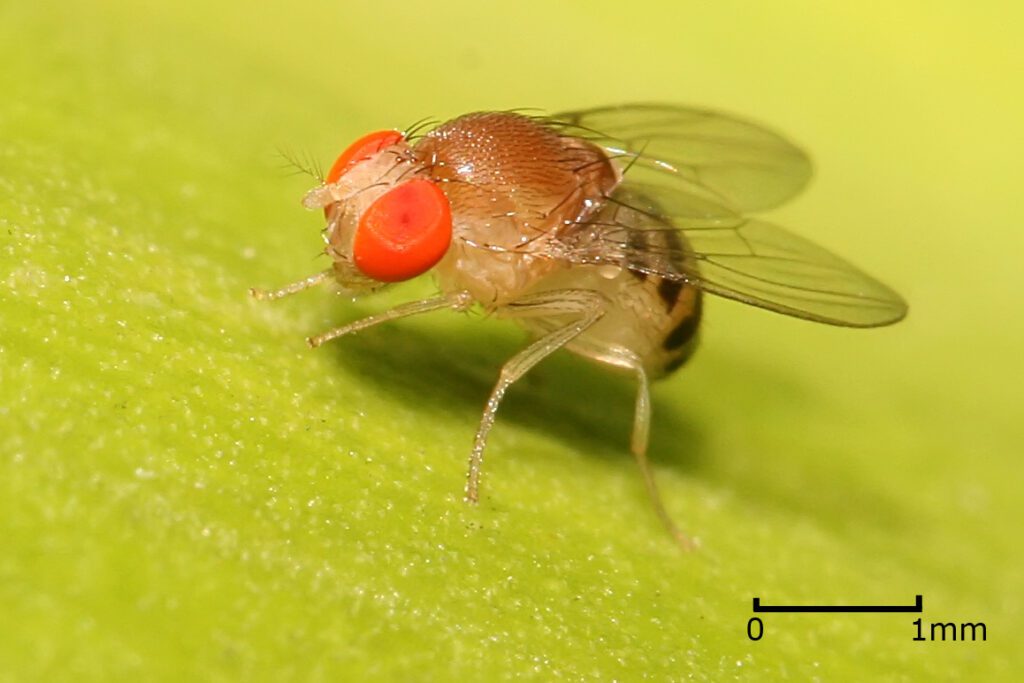
Key characteristics and facts about fruit flies:
- Appearance: Fruit flies are quite small, typically measuring between 2 to 4 millimeters in length. They have red eyes, a tan thorax, and a black abdomen with distinctive yellowish-brown or light-colored bands. There are various species of fruit flies, and their appearance may vary slightly depending on the species.
- Behavior: Fruit flies are prolific breeders, with females capable of laying hundreds of eggs at a time. They prefer to lay their eggs on moist, fermenting fruits and vegetables or other decaying organic matter. The eggs hatch into tiny larvae (maggots), which feed on the fermenting material.
- Reproduction: The lifecycle of a fruit fly consists of four stages: egg, larva, pupa, and adult. Under optimal conditions, the entire lifecycle can be completed in just a few days, leading to rapid population growth.
- Infestation: Fruit flies can become a problem in homes and commercial settings, especially in kitchens and areas where fruits and vegetables are present. Once a few fruit flies find a suitable food source, they can quickly multiply, leading to an infestation.
- Attraction to Fermenting Foods: Fruit flies are highly attracted to the aroma of fermenting sugars and yeasts produced as fruits and vegetables begin to ripen and decay. They can be found hovering around or landing on these food items.
- Health Concerns: While fruit flies are mostly considered a nuisance, they can be a potential health concern. They have the ability to pick up bacteria and other pathogens from decaying materials and can transfer these to surfaces or food items.
Control of Fruit Flies:
Controlling fruit flies involves eliminating their breeding and food sources. Some effective methods include:
- Promptly disposing of overripe fruits and vegetables and keeping kitchen surfaces clean and free of spills and food debris.
- Using fruit fly traps or baits to capture and reduce adult fly populations.
- Regularly emptying and cleaning trash cans and recycling bins.
- Ensuring that fruits and vegetables are stored properly to prevent overripening and decay.
By practicing good sanitation and taking preventative measures, it is possible to reduce fruit fly populations and prevent infestations in homes and food storage areas.
This is an overview for some of the most popular pest & plant’s diseases, please let me know if I forgot something in the comments below, Thanks for reading & keep growing ☮️

